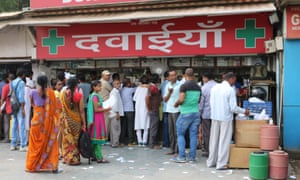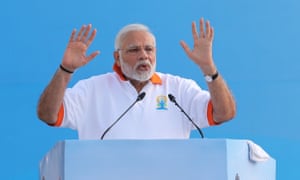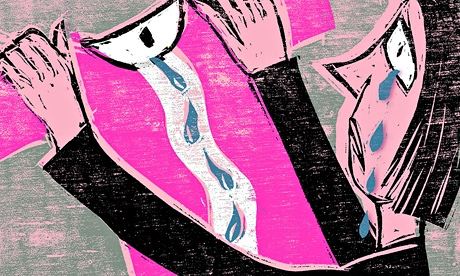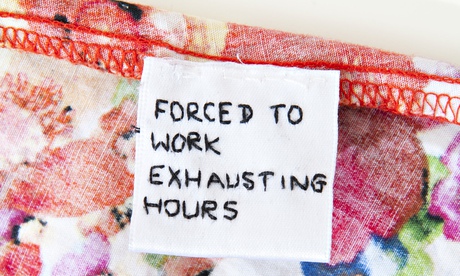Nicole Bullock, Eric Platt and Alexandra Scaggs in The Financial Time
For more than a decade, Mike Schmanske made a living trading “volatility” — betting on the size and speed of moves in the US stock market. After 2014, the market was calm for so long that he spent much of his time sailing a Swan yacht. He got his adrenalin flowing in a different way: on his first trip from Bermuda to Newport, Rhode Island, he raced a hurricane back to port and made it with 12 hours to spare.
Now, a new bout of turbulence is pulling him back to Wall Street. A sharp outbreak of volatility has written more than $5tn off the value of global stocks in less than two weeks and Mr Schmanske is talking to his old trading buddies about getting back into the market.
“This is the most calls I’ve taken in years,” says Mr Schmanske*, a pioneer of some of the first volatility trading products while at Barclays and now a consultant. “Things were slow. I was literally on a boat a few weeks back.”
The catalyst for the volatility surge came at 8:30am last Friday when the US government employment report showed a surprisingly strong rise in wages, prompting bond yields to shoot upwards and the price of those bonds to fall. Within hours, the losses in the $14tn Treasury market had spread to stocks, setting the stage for Wall Street’s worst week in two years.** By Thursday, US equities had entered what is known as a correction — a fall of at least 10 per cent. Many investors who had piled into esoteric instruments that enable them to bet on continued calm in the market had been wiped out.
The ructions over the past week have attracted so much attention because they strike at the question that has haunted markets for the past two years — what happens when the economy returns to normal? Since the financial crisis, markets have been boosted by an unprecedented mixture of ultra-low interest rates and asset-buying by central banks in a bid to fend off the threat of deflation. But with global growth robust and inflation beginning to re-appear, central banks are pulling back.
The question investors are trying to answer is how much of the sharp drop in share prices is due to a technical reaction driven by a much-hyped niche in the market that bets on volatility, versus part of a broader adjustment to a different economic reality.
“The system has changed,” says Jean Ergas, head strategist at Tigress Partners, who said the market had made more of a “rethink” than a correction. “This is the unwinding of a massive carry trade, in which people borrowed at zero per cent and put money into stocks for a yield of 2 per cent.”
The year began on a euphoric note as a large cut in US corporate tax prompted investors to mark up their expectations for earnings growth. The economy was already humming around the world for the first time since the financial crisis.
At its peak on January 26, the market values of S&P 500 companies had surged by $5tn from a year earlier, while global stocks were up by nearly $14tn. The gains lured small investors into the market, with more than $350bn pumped into equity funds in the year, according to fund tracker EPFR Global.
But cracks had already appeared in the bond market. Investors were starting to make noise and demand higher yields. Bill Gross and Jeffrey Gundlach — two well-known money managers in fixed-income markets — both declared last month a new era after a 36-year “bull market” in bonds, which had seen yields driven steadily lower.
It was against that backdrop that markets reacted to last Friday’s news of a 2.9 per cent rise in US wages — not dramatic in a different era but still the largest year-on-year rise since the financial crisis. Inflation fears rose. Investors began marking up the odds that the Federal Reserve could tighten policy by a full percentage point this year, more aggressively than previously thought. Robust growth in Europe and Japan also raised the question of when the European Central Bank and Bank of Japan would begin to remove crisis-era stimulus.
“Inflation fears running back into the market and hitting basically all assets in a market that had run up significantly is a pretty plausible, simple story,” says Clifford Asness, co-founder of AQR Capital Management. “You do not have to go looking for Alger Hiss in this pumpkin.”
By the end of last Friday, yields on benchmark 10-year US Treasuries had hurdled above 2.8 per cent for the first time in nearly four years. For the year, yields had risen more than 40 basis points, increasing the appeal of bonds relative to stocks. The Dow Jones Industrial Average lost 666 points — an unsettling omen for religiously minded traders.
“Optimism over synchronised global growth and supportive macro conditions led to outsized gains in equity markets to start the year,” says Craig Burelle, macro strategies research analyst at Loomis Sayles. “But more recently, some investors worried the economic momentum was too much of a good thing, and optimism gave way to concerns about the future path of inflation and interest rates.”
Before long, the anxiety had gone global. On Sunday evening, many Americans were watching the Philadelphia Eagles upset the New England Patriots in the Super Bowl: at the same time, Asian markets were opening on Monday with a spike in bond yields.
“On any other Sunday night you might have been more anxious about what you were seeing,” says Matt Cheslock, a trader at Virtu and a 25-year veteran of the New York Stock Exchange. “The game provided a nice distraction.”
Monday morning in the US added a new source of uncertainty with the swearing in of Jay Powell as the chairman of the Federal Reserve, bringing a relatively little-known face to lead the central bank. For much of the day, Wall Street avoided serious losses. Then, a big drop seemed to come out of nowhere. About an hour before the closing bell, the Dow slumped more than 800 points in 10 minutes.
“The adrenalin kicks in,” says Mr Cheslock. “Everyone gets sharper. The complacency is long gone.”
Customers rushed to log into their accounts at Vanguard, TD Ameritrade, T Rowe Price and Charles Schwab, straining websites. Some were unable to place orders.
“As the volatility picks up and the indices plummet the rumours start to swell,” says Michael Arone, chief investment strategist at State Street Global Advisors. “Folks are wondering the classic Warren Buffett line about when the tide goes out, you see who is not wearing swimming trunks.”
Over the past week, the investors who have been left most exposed are those who had made bets on subdued volatility. As share prices slumped, Wall Street’s “fear gauge” — the widely watched Cboe Vix volatility index — spiked.
Trading strategies that profited from the calm in markets during 2017 quickly unravelled. Two exchange-traded products that enabled investors to bet on low volatility lost nearly all their value on Monday.
After the bell on Monday, the Vix continued to rise and shares in vehicles related to Vix also fell.
On Tuesday morning, Nomura, the Japanese bank, said in Tokyo that it would pull a product that was pegged to S&P 500 volatility. Within half an hour, the Nikkei 225 had fallen 2.5 per cent, which, in turn, prompted a bout of selling in bitcoin. The digital currency — worth more than $19,000 as recently as December — dropped below $6,000 just after 2:45am in New York, as traders in London and Frankfurt were getting to their desks. Stock markets in both countries would open 3.5 per cent lower.
As US investors slept, the turbulence continued. At 4am in New York, a number of exchange traded products related to volatility were halted. By 7:11am, more than two hours before the US open, the Vix volatility index shot above 50 — only the second time it has done so since 2010. The turbulence forced bankers to postpone a number of bond sales planned for the day. Then Credit Suisse said it would close an exchange traded note, known by the ticker XIV — which is designed to move in the exact opposite direction to the Vix each day, and had thus collapsed as volatility rose.
“People had forgotten that stocks don’t just go up,” says Adam Sender, head of Sender Company and Partners, a hedge fund. “Corrections are a normal process. This was inevitable. Interest rates rising was the trigger, but short-volatility was the fuel.”
The volatility subsided amid a Tuesday afternoon rally in New York, and world stock markets survived much of the next day without incident. But then at 1pm on Wednesday in New York, signs of nervousness re-emerged. Demand at the auction of US Treasury bonds was weak, a signal that investors were worried about inflation and a rising budget deficit, and would therefore only buy at higher yields. Stocks ended the day in the red, and when investors in Tokyo returned on Thursday, prices dropped quickly. Heavier selling ensued on Wall Street. By Friday morning, the main indices in the US, Germany and Japan were all down more than 10 per cent from their January highs. When trading finally closed for the week after another rollercoaster day, US losses were shaved to about 9 per cent.
For some, the shock created by the collapse of the volatility products has been salutary. “It’s always good to be reminded of these things with accidents that aren’t of systemic importance to the entire economy,” says Victor Haghani, founder of London’s Elm Partners and an alumnus of Long-Term Capital Management. “It’s a gentle reminder from the market.”
However, many investors believe the questions raised over the past week go well beyond the products connected to the Vix index. “We’ve gone from a market used to playing checkers — rising earnings, low rates equals higher prices — to being forced to compete in grandmaster three-dimensional chess: worries over growth versus rates, equity valuations, and the strength of the dollar, and now market structure concerns,” says Nicholas Colas, cofounder of DataTrek, a New York research group.
While some investors talked of a buying opportunity, believing that faster economic growth and a modest uptick in inflation represent a positive backdrop for equities, many headed for the exits. Investors pulled more than $30bn from stock funds in the week to Wednesday, the largest week of withdrawals since EPFR began tracking the data at the turn of the century.
The slump in share prices put the White House on the defensive, given that President Donald Trump has taken pride in the stock gains under his administration. “In the ‘old days,’ when good news was reported, the Stock Market would go up. Today, when good news is reported, the Stock Market goes down,” he tweeted on Wednesday. “Big mistake, and we have so much good (great) news about the economy!”
Others were less confident. “This is not yet a major earthquake,” said Lawrence Summers, US Treasury secretary under President Bill Clinton. “Whether it’s an early tremor or a random fluctuation remains to be seen. I’m nervous and will stay nervous. [It is] far from clear that good growth and stable finance are compatible.”
Some strategists expect the recent declines to lead to further selling, as computer-driven funds that target volatility are forced to shed more equities. Analysts put the amount of automatic selling from the recent turmoil at about $200bn, and more could be on the way unless markets simmer down.
Jonathan Lavine, co-managing partner of Bain Capital, says a drop in share prices was not a surprise in itself. “It was the ferocity of the move, not triggered by any material news and propelled by a small corner of financial markets,” he says. “You have to ask yourself what would happen in the event of real bad news.”








